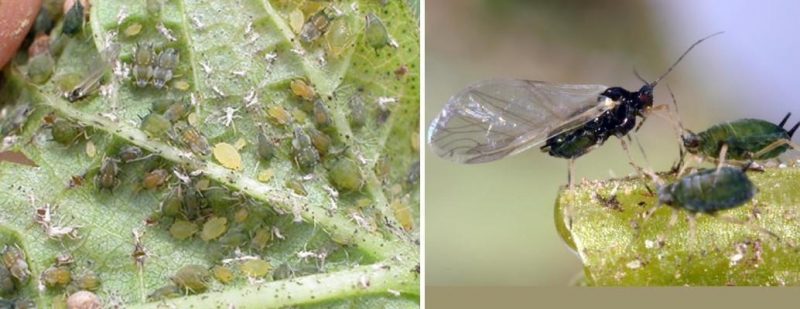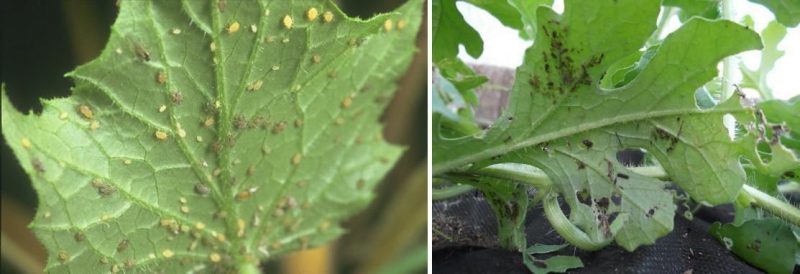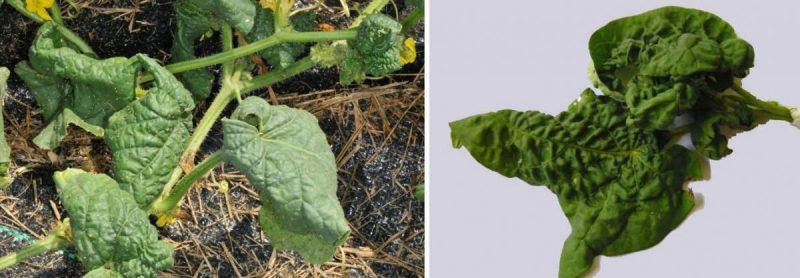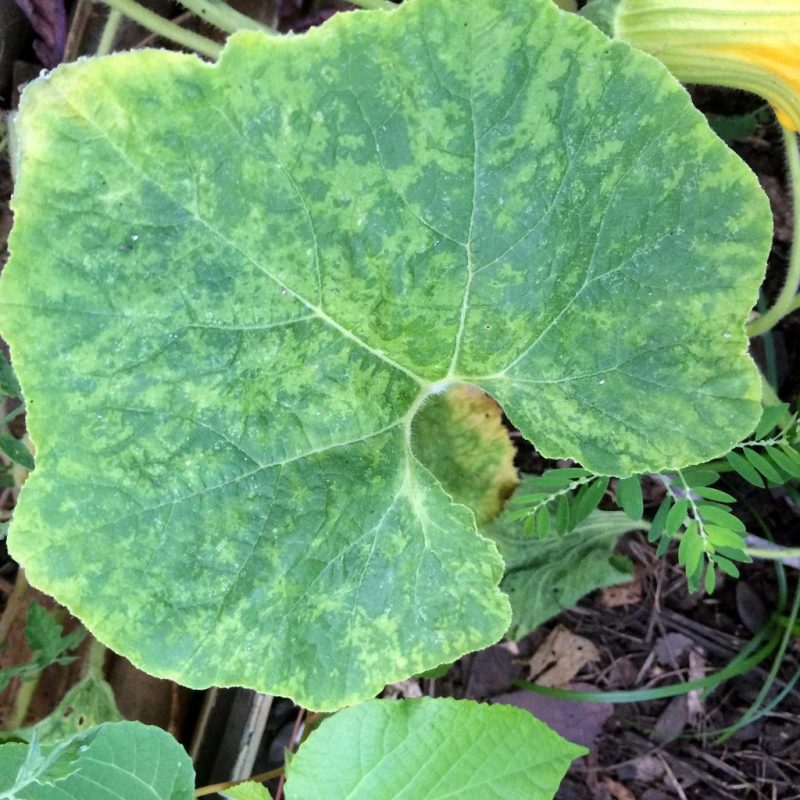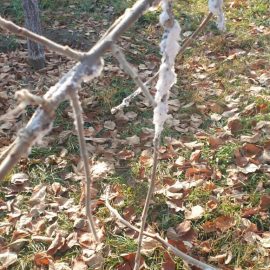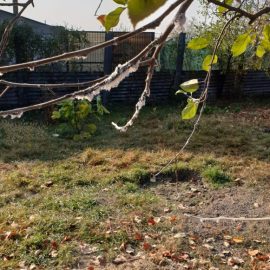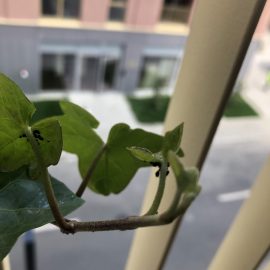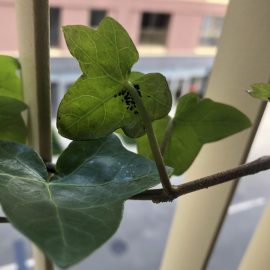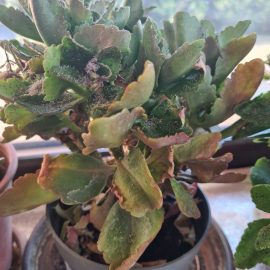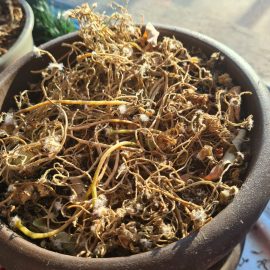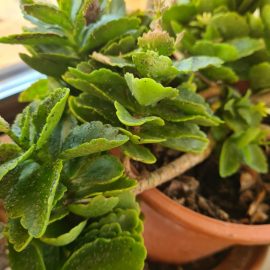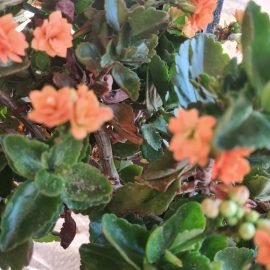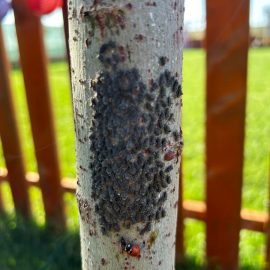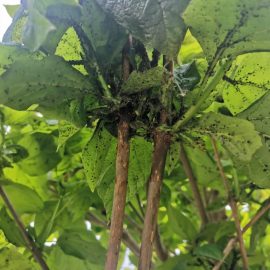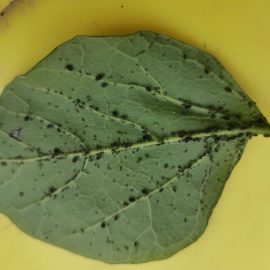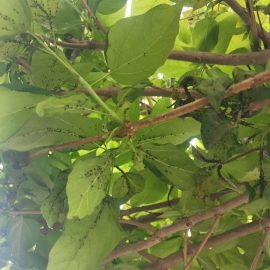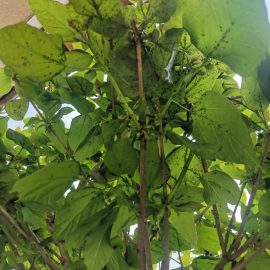Cotton aphid (Aphis gossypii) – pest management
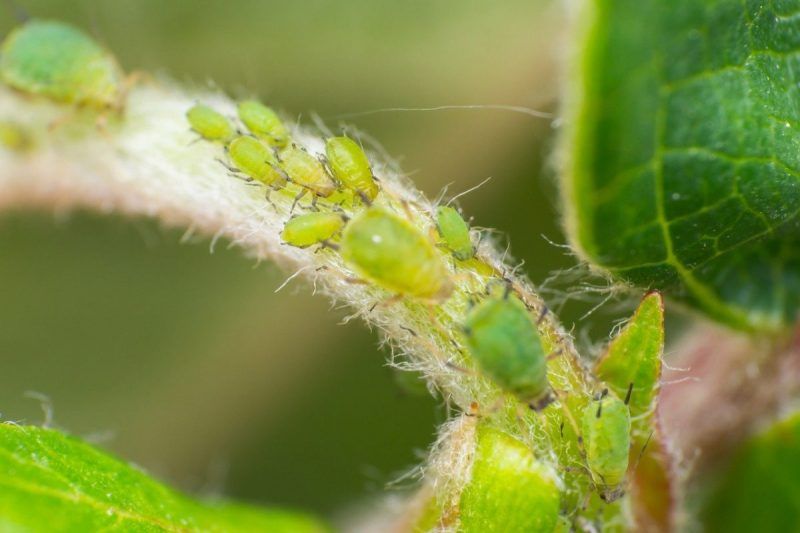
The cotton aphid (Aphis gossypii) is a species widespread worldwide. It belongs to the aphid group. It can be found from the lowland areas to the mountainous ones, in the field, gardens, and protected areas.
Description. The adult is 1.5-2 mm long. It has a spherical greenish-brown body, sometimes yellow, covered with a very fine powdery secretion. The legs are yellow-green. The cornicles are black. The cotton aphids have both wingless specimens (aptery) and specimens with wings (winged).
The female specimens have a dark green or yellow-green abdomen. They have an oval shape, with black cornicles. Adult females with wings have a yellow-green or black abdomen. The chest and head are black. These facilitate the spread of aphids from one plant to another. The nymphs are yellow or greenish in color and are covered with a waxy thin layer. The eggs are shiny, yellow at first, then they turn black.
Life cycle. It is a migratory species with a holocyclic evolution. The primary host plant is the alder buckthorn (Rhamnus frangula), and the secondary hosts are numerously cultivated and spontaneous plants.
In spring, when the weather becomes warm, the first specimens appear from overwintering fertilized eggs. They feed, become adults, and give birth to nymphs (they do not need a male and give birth to live specimens). The nymphs will transform into aptery or winged females. A female gives birth during its life to about 70-80 nymphs. The number of generations is 13-16 per year.
Breeding is greatly diminished in July due to a large number of predators and natural parasites.
This pest overwinters as an egg. In the case of protected areas, which involve the continuous cultivation of plants, aphids overwinter in the active form, as an adult or nymph.
Crop damages. The cotton aphid is considered a polyphagous pest. It is reported on many cultivated and spontaneous plants. The most significant damage is caused to crops of cucumbers, melons, squash, cotton, and to some greenhouse plants. In general, they form crowded colonies that are located on the underside of the leaves and on young shoots. They sting and suck the intracellular juice. The leaves of the attacked plants become twisted, then turn yellow and dry.
The plants are also affected by the sweet secretions (“honeydew”) produced by these aphids. The secretions cover the leaves and allow the infection with saprophytic fungi (for example Capnodium salicinum that produces sooty mold). Thus, chlorophyll assimilation is blocked. The beneficiaries of these sweet secretions are ants. A symbiosis is created between them and the aphids, the aphids being, thus, protected by certain natural predators.
If ants are seen on the leaves and shoots of plants, it is a sign of infestation with cotton aphids.
The biggest damage caused by the cotton aphid is caused by the transmission of viruses. These pests are important vectors of viruses such as the cucumber mosaic (Cucumis virus 1 and Cucumis virus 2).
Pest management. It is a pest that is difficult to fight. However, a number of agrotechnical measures can be applied. These include: destroying the remains of the attacked plants and the primary host plants in cultivation areas, maintaining proper cultural hygiene.
When aphid colonies become obvious, intervention with contact, systemic and leaf-penetrating plant protection products is necessary. You should use the products alternatively. Also, the doses specified by the manufacturer must be taken into consideration, in order to avoid the appearance of resistant forms.
In order to control the cotton aphids, treatments must be carried out with insecticides specific to control aphids.
Recommended products
-
You can find products on a different store
Change Store -
You can find products on a different store
Change Store -
You can find products on a different store
Change Store -
You can find products on a different store
Change Store -
You can find products on a different store
Change Store -
You can find products on a different store
Change Store -
You can find products on a different store
Change Store -
You can find products on a different store
Change Store -
You can find products on a different store
Change Store -
You can find products on a different store
Change Store -
You can find products on a different store
Change Store -
You can find products on a different store
Change Store -
You can find products on a different store
Change Store -
You can find products on a different store
Change Store -
You can find products on a different store
Change Store -
You can find products on a different store
Change Store -
You can find products on a different store
Change Store -
You can find products on a different store
Change Store -
You can find products on a different store
Change Store -
You can find products on a different store
Change Store -
You can find products on a different store
Change Store -
You can find products on a different store
Change Store -
You can find products on a different store
Change Store -
You can find products on a different store
Change Store














































































































































































































































































































































































































































